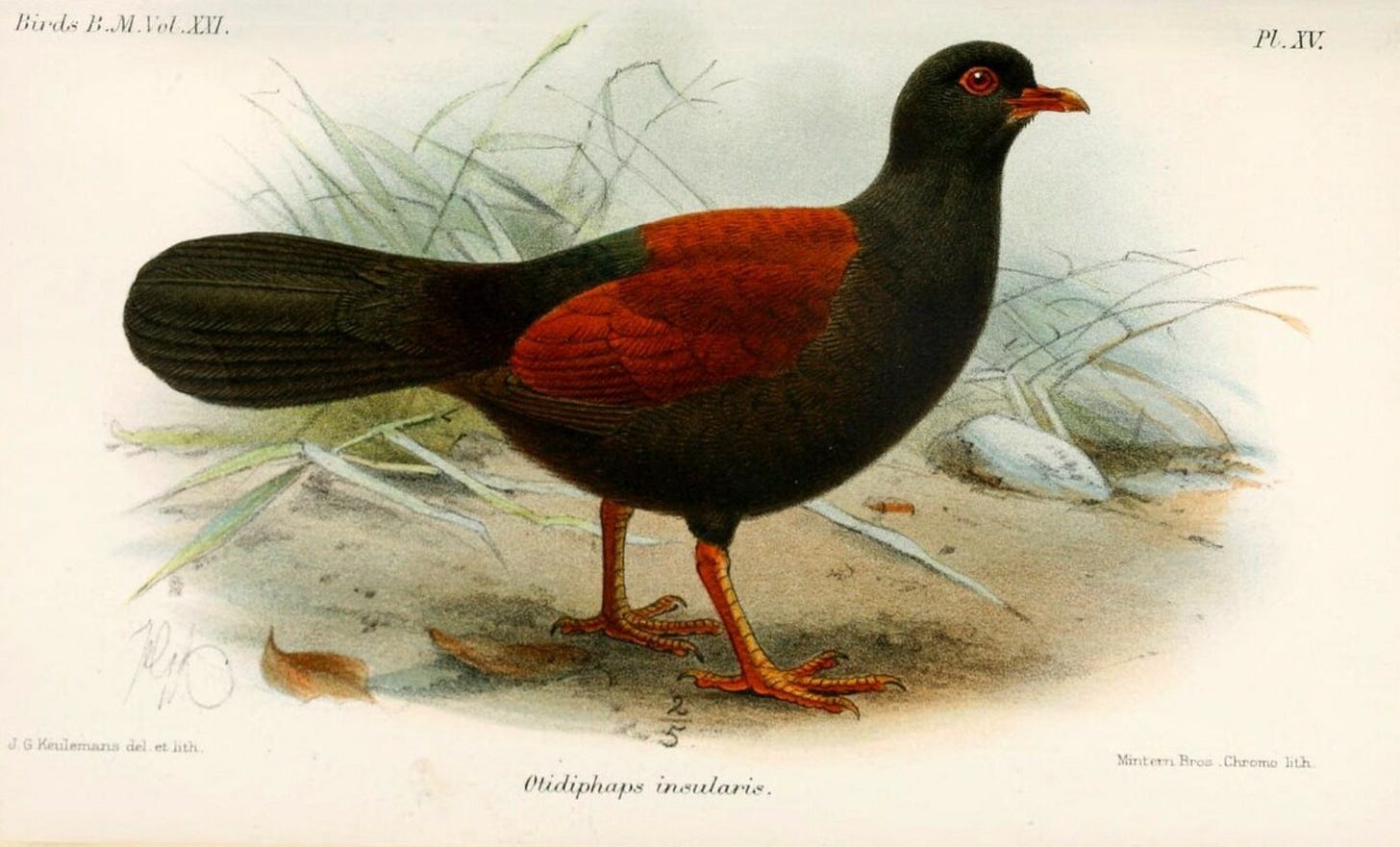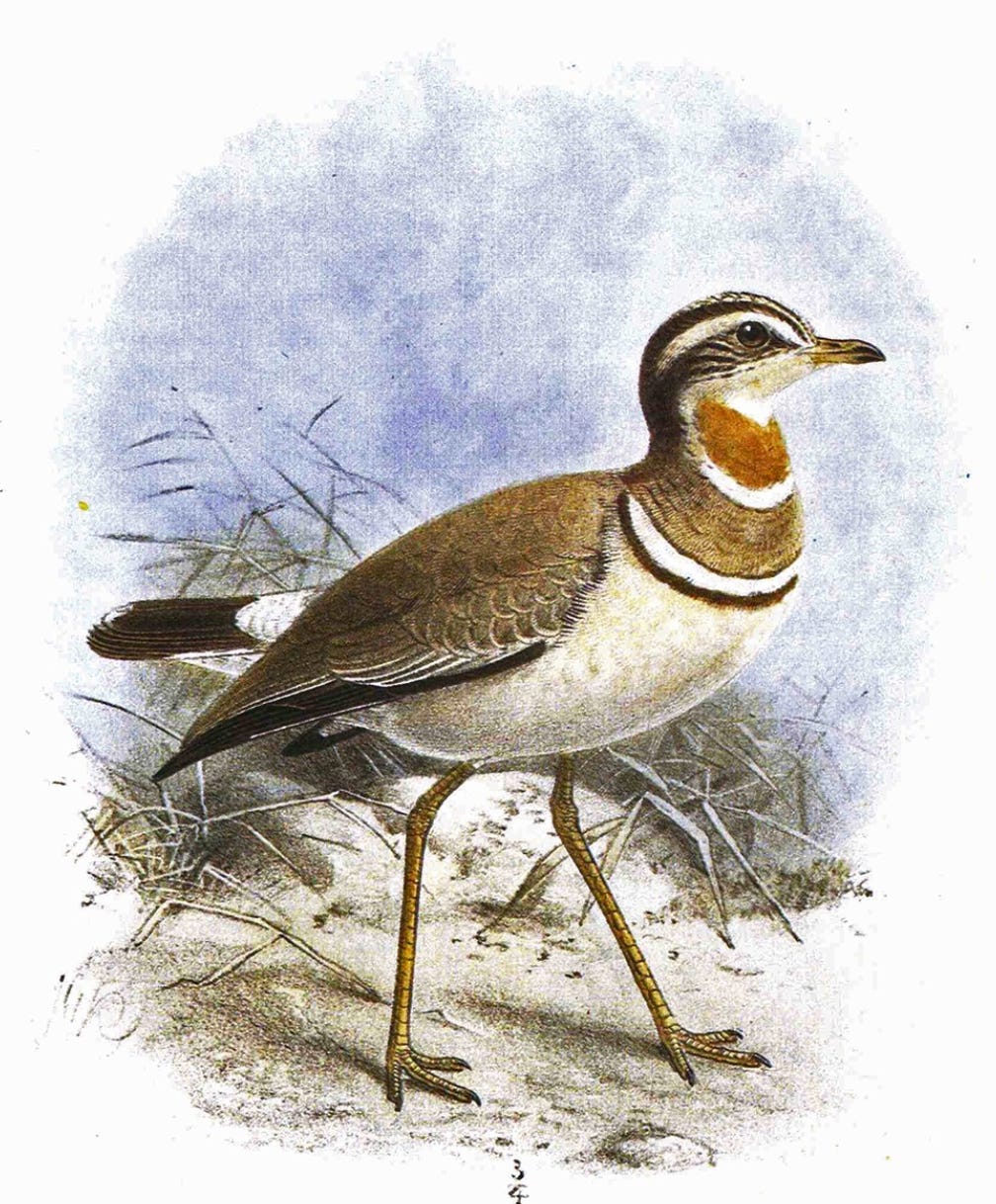Community & Conservation: The Search for Lost Birds
When hope meets persistence, even the rarest voices can be heard again

Welcome to the birdy side of the internet! Last week, we explored the world of nocturnal birding as part of our developing Birding Skills series. This week, we return to our regular Community & Conservation feature to spotlight a remarkable story from India: the rediscovery of a long-lost bird, highlighting the global Search for Lost Birds. It’s a tale of mystery, rediscovery, and a powerful reminder that curiosity, persistence, and careful observation can uncover hidden wonders in nature—even species we feared were gone forever.
Community & Conservation: The Search for Lost Birds
Imagine the thrill of spotting a bird thought lost forever—its mere existence erased from modern field guides, its call unheard for decades or even centuries. The rediscovery of such feathered phantoms is the heart, hope, and hallmark of the Search for Lost Birds, a global initiative dedicated to finding species that have not been confirmed in the wild for ten years or more. Partnered by the American Bird Conservancy, Re:wild, and BirdLife International, with support from the Cornell Lab of Ornithology’s Birds of the World, the project spotlights the most elusive birds on the planet, combining rigorous science, local knowledge, and the passionate dedication of birders worldwide.
Origins
Since its launch in 2021, the Search for Lost Birds has built a community united by curiosity, hope, and conservation action. By maintaining a dynamic list of “lost” species, the initiative prioritizes both global awareness and local action. A “lost bird” is not merely rare—it is a species for which no confirmed evidence of life exists in the wild for over a decade, and which has no population under human care, a critical distinction.
These 100+ birds represent gaps in both our knowledge and conservation. By highlighting them, the Search for Lost Birds draws attention to vulnerable habitats and sometimes reveals surprising insights into the ecology and behavior of missing birds. Rediscovered lost birds are also emblematic: they remind us that nature still holds secrets waiting to be discovered, and that persistence and careful observation can yield extraordinary results.
Success and Proof of Concept
Already, at least 16 species previously thought possibly extinct have been rediscovered or removed from the list, offering tangible proof that persistence and observation can change the story for even the most critically endangered birds. Each rediscovery serves as a reminder that no species is truly lost until every effort has been made to find it. Thankfully, each of the rediscoveries has come with undeniable proof.
Some notable successes in recent years include the rediscovery of the Black-naped Pheasant-Pigeon from Fergusson Island (D’Entrecasteaux Islands), off southeastern New Guinea (considered by some authorities to be a subspecies of the Pheasant Pigeon) and the Bougainville Thicketbird from Bougainville, an autonomous region within Papua New Guinea. These victories illustrate the power of dedicated fieldwork, collaboration with local communities, and the patience required to reconnect with species thought gone.
Editor’s note: Witnessing the rediscovery of the Black-naped Pheasant-Pigeon is one of the greatest feel-good moments in bird research history. Watch it here (Audubon): “‘Like Finding a Unicorn’: Researchers Rediscover the Black-Naped Pheasant-Pigeon, a Bird Lost to Science for 140 Years.”
Rediscovery of Jerdon’s Courser
The recent rediscovery of the Jerdon’s Courser in Andhra Pradesh, India, further exemplifies the cause and mission of the Search for Lost Birds. Silent for more than two decades, this nocturnal, long-legged shorebird’s distinctive call was recently recorded on August 24, 2025, sparking hope for its survival.
The courser, sometimes considered a “ghost bird,” rarely glimpsed and incredibly difficult to study due to its secretive, nocturnal habits and preference for dense scrub habitat, underscores the importance of habitat protection, local engagement, and careful monitoring, even in the absence of sightings. Its reappearance outside the previously known range of the Lankamalleswara Wildlife Sanctuary illustrates how little we sometimes know about the places these birds still survive—and how much impact careful observation can have.
Editor’s note: For the amazing, full account on the rediscovery of Jerdon’s Courser, read the original online article: Dream Come True – Jerdon’s Courser Discovered Outside Lankamalla After 125 Years – on the First Day of Our Trip!
Why It Matters
The implications of these rediscoveries extend far beyond excitement for birders. Every species found represents a chance to protect critical habitats, strengthen local conservation policies, and inspire communities to value and safeguard the natural world. It may sound cliché, but when a species disappears, it’s gone for good. Each rediscovery informs research, conservation planning, and global awareness. It reminds us that even in a world facing climate change, habitat loss, and human encroachment, focused action can make a difference.
For those involved in birding, the Search for Lost Birds initiative demonstrates how participation can be more than personal enjoyment—it can be part of a global movement. Every checklist submitted to eBird, every careful observation shared, every habitat monitored contributes to a larger effort. Not every bird is lost, but there is tremendous value in documenting even our most common species, as reports like State of the Birds make clear. Community scientists and professional ornithologists alike are part of this worldwide network, working in concert to ensure these rare birds survive for generations to come.
The story of the Jerdon’s Courser is both a dramatic headline and a symbolic vessel for what the Search for Lost Birds represents: hope, vigilance, and the transformative power of human engagement. It reminds us that conservation is not passive—it is active, often accessible, and always thrilling. By seeking lost birds, we celebrate the mystery and wonder of nature while taking tangible steps to protect it.
Weekly Poll
Thanks for Reading
Thank you for being part of our vibrant community and for sharing in the excitement of stories like this one. The rediscovery of birds like the Jerdon’s Courser reminds us that conservation is full of surprises—and that every birder, in their own way, contributes to these victories. We hope this month’s feature inspires you to continue exploring, learning, and caring for the natural world.




